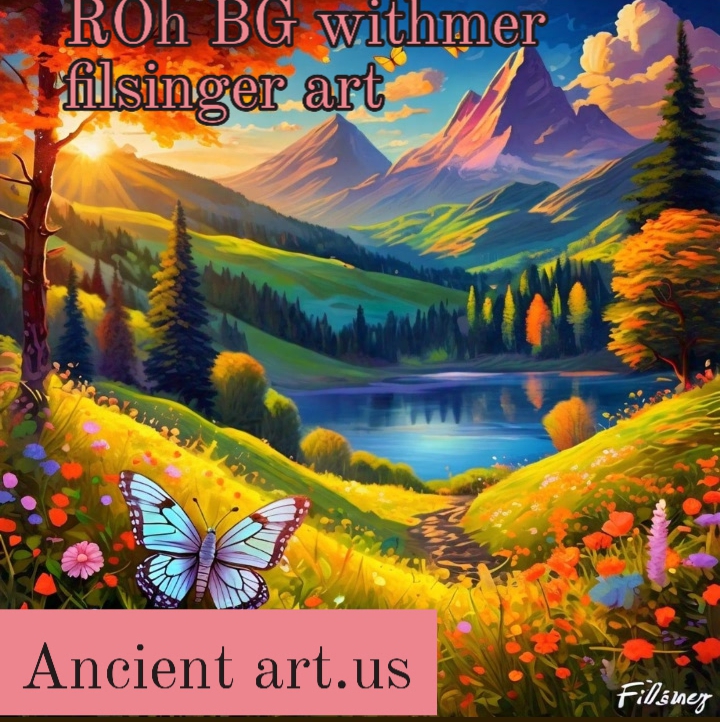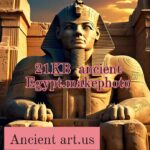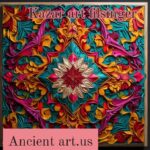Introduction
In the vast world of contemporary art, certain names stand out not only for their innovative approaches but also for their profound ability to communicate complex emotions, Roh B.J. Whitmer Filsinger’s art narratives, and cultural experiences through visual language. Roh B.J. Whitmer Filsinger is one such artist whose work has garnered attention for its unique style, depth of meaning, and commitment to pushing artistic boundaries.
Known for blending traditional techniques with modern-day sensibilities, Roh B.J. Whitmer Filsinger’s art spans across various media, from paintings and sculptures to digital works and installations. His creations offer a vibrant exploration of themes like identity, culture, social justice, and the interplay between the past and the present.
In this article, we will explore the life, art, and legacy of Roh B.J. Whitmer Filsinger. We will delve into the themes that define his work, examine the techniques he uses to bring his ideas to life, and understand how his art continues to resonate with audiences around the world.
The Artistic Journey of Roh B.J. Whitmer Filsinger
Early Life and Education
Roh B.J. Whitmer Filsinger’s artistic journey began in a family that valued creativity and intellectual curiosity. Born and raised in an environment rich with diverse cultural influences, Filsinger was exposed to art from an early age. His early artistic endeavors were shaped by a mix of Western and Eastern philosophies, which would later manifest in his work as a fusion of both traditional and contemporary techniques.
He pursued formal education in fine arts at some of the leading institutions, where he honed his skills in painting, sculpture, and digital media. Filsinger’s exposure to global art movements, including Abstract Expressionism, Surrealism, and the emerging trends in digital art, allowed him to develop a distinctive voice that is both experimental and evocative.
Evolution of His Style
From the early stages of his career, Roh B.J. Whitmer Filsinger sought to break away from conventional artistic norms. His initial works were heavily influenced by traditional realism, but as he explored various forms and mediums, he gradually transitioned towards a more abstract, conceptual approach. He began to experiment with form, color, and texture, creating pieces that reflect his personal philosophies and explorations of the human experience.
A significant aspect of Filsinger’s development as an artist has been his ability to adapt to new mediums, including digital art. Over time, he became known for his integration of cutting-edge technology with traditional techniques, bridging the gap between analog and digital worlds in ways that few contemporary artists have managed to do so successfully.
Themes and Concepts in Filsinger’s Art
Roh B.J. Whitmer Filsinger’s work is deeply introspective and often deals with complex themes such as identity, memory, and the tension between history and modernity. His art invites viewers to question their own perceptions of self, society, and the world around them.
Identity and Self-Expression
One of the core themes in Filsinger’s body of work is identity. His pieces often explore the fluidity of identity and how it is shaped by both internal and external factors. Whether through portraits or abstract compositions, his works challenge the viewer to reflect on their own identity, pushing them to consider how personal and cultural histories intersect.
For instance, many of Filsinger’s works incorporate symbols and elements that reflect his own mixed heritage, blending different cultural aesthetics to create pieces that speak to universal human experiences while acknowledging specific cultural narratives.
Memory and Nostalgia
Another prominent theme in Filsinger’s art is memory. His work often addresses the role of memory in shaping personal identity and collective consciousness. By using layers of colors, textures, and forms, he creates visual metaphors for the way memories can be fragmented or distorted over time. The concept of nostalgia also plays a role in his art, as he often references historical events or past artistic movements, evoking a sense of longing for a time or place that may never be fully grasped.
Social and Political Commentary
Filsinger does not shy away from addressing the pressing Roh B.J. Whitmer Filsinger’s art issues of our time. Many of his works contain sharp critiques of social and political structures, commenting on issues like inequality, power dynamics, and the struggles of marginalized communities. Through abstract representations and powerful symbolism, his art offers a subtle yet impactful way to provoke conversation and introspection on important social matters.
The Techniques and Mediums of Filsinger’s Art
Roh B.J. Whitmer Filsinger is known for his innovative use of diverse artistic techniques and mediums. His ability to blend traditional art forms with modern technologies is one of the reasons his work has received widespread acclaim.
Traditional Techniques
Filsinger’s early works were heavily grounded in traditional painting and sculpture techniques. His mastery of oil paints, charcoal, and acrylics allowed him to create rich, textured pieces that drew on centuries of artistic tradition. His works often feature vibrant colors and dynamic forms that evoke a sense of energy and movement.
In his sculptures, Filsinger employed a range of materials including marble, bronze, and wood. Each medium served as a way for him to explore the relationship between materiality and meaning, often using his sculptures to express complex emotions or historical narratives.
Digital Art and Mixed Media
As technology evolved, so did Filsinger’s approach to art. Embracing the digital age, he began experimenting with computer-generated imagery (CGI) and digital Roh B.J. Whitmer Filsinger’s art installations. His digital works often integrate elements from his traditional paintings, creating hybrid forms that merge the tactile nature of painting with the fluidity and innovation of digital tools.
His mixed-media pieces combine various mediums such as photography, video, sculpture, and interactive components, inviting viewers to engage with the work on multiple levels. By combining technology with traditional materials, Filsinger creates a rich tapestry that speaks to both the past and the present, offering a nuanced reflection on the future of art.
Interactivity and Installation Art
One of the defining features of Filsinger’s recent works is the use of interactivity in his installations. Many of his pieces involve the audience in a way that traditional art forms do not. For example, Filsinger has created immersive environments where viewers are invited to interact with the artwork itself. This approach challenges the boundaries of conventional art and encourages dialogue between the viewer and the work.
Filsinger’s Influence on Contemporary Art
Roh B.J. Whitmer Filsinger has undoubtedly made a significant mark on contemporary art. His ability to merge diverse influences, both cultural and artistic, has earned him recognition in major art galleries and exhibitions worldwide.
His work speaks to the growing importance of bridging the gap between traditional and modern art forms, demonstrating how art can evolve with technology while maintaining a deep respect for cultural and historical contexts. As the world of art continues to shift, Filsinger’s innovative approach will likely continue to inspire future generations of artists and thinkers.
Conclusion
Roh B.J. Whitmer Filsinger’s art is a powerful reflection of the complexities of modern life. Through his exploration of identity, memory, and social issues, Filsinger’s works invite viewers to engage with art on a deeper level, prompting introspection and conversation. His unique blend of traditional and contemporary techniques, as well as his exploration of digital media, sets him apart as one of the leading figures in contemporary art today.
As the art world continues to evolve, Filsinger’s legacy will undoubtedly leave an indelible mark on the future of artistic expression. His ability to innovate while staying grounded in the rich history of artistic traditions ensures that his work will continue to resonate with audiences for years to come.
FAQs about Roh B.J. Whitmer Filsinger’s Art
1. What are the main themes in Roh B.J. Whitmer Filsinger’s art?
Roh B.J. Whitmer Filsinger’s art explores themes of identity, memory, nostalgia, and social justice. He often reflects on the intersection of personal and cultural histories, and many of his works challenge viewers to reconsider their own perspectives on identity and societal structures.
2. How does Filsinger incorporate digital media into his artwork?
Filsinger embraces the fusion of traditional art forms with digital media. He creates hybrid works that blend paintings, sculptures, and digital technology. This fusion allows him to push the boundaries of conventional art and create immersive, interactive experiences for his audience.
3. What are some notable pieces by Roh B.J. Whitmer Filsinger?
Some of Filsinger’s notable works include his abstract portrait series, his mixed-media installations, and his digital sculptures. Each piece reflects his unique ability to merge the past with the present, using symbolism and innovation to convey deep emotional and social messages.
4. How has Filsinger contributed to the contemporary art scene?
Filsinger has contributed to the contemporary art scene by blending traditional techniques with modern technology, creating artwork that is both innovative and meaningful. His exploration of interactivity and immersive installations has also influenced how contemporary art engages with audiences.
5. What can we expect from Roh B.J. Whitmer Filsinger in the future?
As an artist, Roh B.J. Whitmer Filsinger will likely continue to evolve and experiment with new media and ideas. Given his history of blending tradition with innovation, we can expect to see more works that challenge artistic conventions and explore the relationship between technology, culture, and identity.


